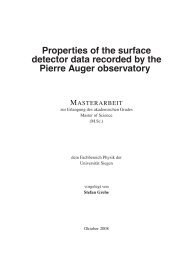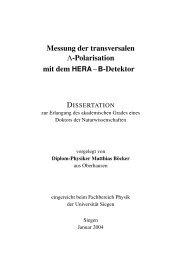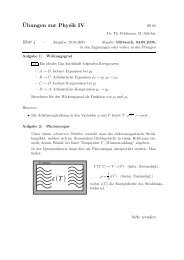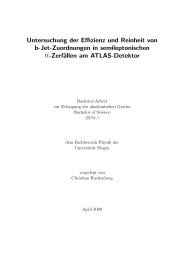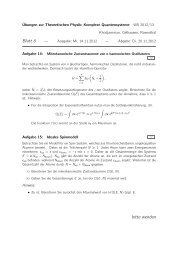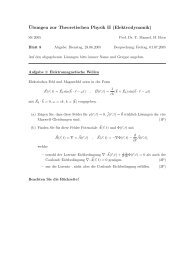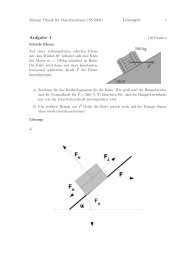Feynman Diagrams For Pedestrians - Herbstschule Maria Laach
Feynman Diagrams For Pedestrians - Herbstschule Maria Laach
Feynman Diagrams For Pedestrians - Herbstschule Maria Laach
You also want an ePaper? Increase the reach of your titles
YUMPU automatically turns print PDFs into web optimized ePapers that Google loves.
1.4 Units• from now on, we will use units which will give us numbers with natural orderof magnitude for quantum mechanics and relativistic kinematics̷h = c = 1 . (17)• velocities and actions are dimensionless and therefore[ ]1[energy] = [momentum] = [mass] = . (18)length• in particular, our <strong>Feynman</strong> rules, will later yield cross sections in units of [energy −2 ],e. g.• the relevant conversion factors are(TeV 2 nb = GeV 2 mb) and therefore2 Asymptotic Statesσ = 4πα23E 2 (19)̷hc = 197.327 053(59) MeV fm (20)(̷hc) 2 = 0.389 379 66(23) TeV 2 nb (21)σ =• described by wave equations, that are4πα 23(E/TeV) 2 0.39 nb (19′ )1. linear: superposition principle of quantum mechanics2. relativistic: matrix elements of observables must transform under rotationsand Lorentz boosts like scalars, four vectors, tensors, &c.3. and have the correct dispersion relation: E 2 = ⃗p 2 + m 2• objects of interest– spin-0 particles: not yet unambigously observed as an elementary particle,but ATLAS and CMS have strong evidence for a state with spin 0 or 2∗ one invariant component– spin-1/2 particles: leptons, quarks∗ at least two components: spinor under rotations– spin-1 particles: gauge bosons∗ massive three components (polarizations)∗ massless two components (polarizations)4



